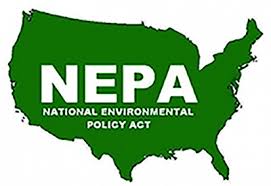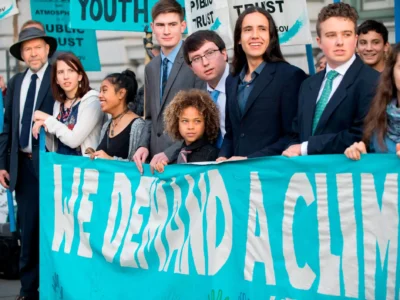The Supreme Court’s Top-10 Environmental Law Decisions
If these decisions had come out differently, environmental law would look very different than it does today.
What are the most important Supreme Court decisions in environmental law? My “top 10” list is made up of cases that have done the most to shape the field as a while or the implementation of a major environmental statute.
Putting together this list highlighted a decades-long duel between two Justices, Antonin Scalia and John Paul Stevens. Often, Scalia voted against the environmental side and Stevens voted for it. Between them, the two Justices account for seven of the ten opinions on my list. The two Justices also had very different judicial philosophies, not to mention ideologies, though both were Republican appointees.
Another obvious point is the environmental side of these cases generally won until the Obama years. EPA lost all three of the biggest cases since 2008. The two most recent losses were particularly serious. One loss gave anti-regulatory a strategy for attacking almost any ; the other wiped out most of a regulatory regime that had been in effect for nearly fifty years. Unless the Court moderates its views, future regulations will face tough sledding.
With that as background, here’s the list in chronological.
E.I. Dupont v. Train, 420 U.S. 112 (1977) (Justice Stevens).
The Clean Water Act requires that industrial sources reduce their discharges, but it left two big questions unanswered: Would EPA or the states set the pollution limits? And would the limits be set by regulations applying to entire industries, or on a facility-by-facility basis? The Court ruled for EPA on both counts, allowing the agency to set industrywide standards. A contrary ruling would have gutted the statute, leaving water quality largely subject to state permit authorities.
TVA v. Hill, 437 U.S. 153 (1978) (Chief Justice Burger).
This is the case that put teeth into the Endangered Species Act. Resisting the pleas that saving a minor species of fish was not worth halting a dam project, the Court held that the statute meant what it said: protecting endangered species is a paramount value.
Industrial Union Dept., AFL-CIO v. Amer. Petroleum Inst., 448 U.S. 607 (1980) (Justice Stevens).
This decision, commonly called the Benzene case, required the agency to at least attempt to quantify the risks of toxic chemicals before regulating. Although the ruling might have been viewed as limited to the particular statute in question (a workplace safety law), it was interpreted as applying across the board. This requirement for quantified risk assessment has shaped risk management of many kinds.
Chevron v. NRDC, 467 U.S. 837 (1984) (Justice Stevens).
In this opinion dealing with a fairly technical issue under the Clean Air Act, Justice Stevens strengthened judicial deference to administrative agencies. The Chevron doctrine has become a pillar of administrative law. Initially, Chevron was hailed by conservative judges and commentators. Since Obama’s election in 2008, the two sides have more or less switched. The Supreme Court has now taken two cases to decide whether to overrule Chevron or at least severely limit it.
Lujan v. Defenders of Wildlife, 504 U.S. 555 (1992) (Justice Scalia).
Early decisions such as Sierra Club v. Morton opened the door for environmental groups to sue over government actions, something that Justice Scalia had opposed since his days as a law professor. (Sierra Club was a runner-up for inclusion on the list.) Lujan was his most notable victory on this issue. He gained a majority for his view that, notwithstanding a statute authorizing suit by any citizen, environmentalists could not sue to protect endangered species unless they had firm plans to visit the areas in the question.
Whitman v. American Trucking Ass’ns, 531 457 (2001) (Justice Scalia).
This case was a deviation from Scalia’s pattern: he voted to uphold EPA’s air quality standards. The Clean Air Act required EPA to standards that, “allowing an adequate margin of safety, are requisite to protect the public health.” Scalia rejected the claim that this standard was an unconstitutional delegation of legislative power to EPA, holding that Congress gave sufficient guidance to EPA. More surprisingly, he held that EPA could not use cost-benefit analysis to set the standards and in fact could not consider costs in any form.
Massachusetts v. EPA, 549 U.S. 497 (2007) (Justice Stevens).
The case involved EPA’s power to regulate greenhouse gases like carbon dioxide under the Clean Air Act. Stevens cobbled together a majority to hold that EPA had this authority. The Court also ruled that EPA could consider only the science relating to climate change in deciding whether to exercise this authority. Since Obama, EPA has used this authority to regulation carbon emissions from vehicles and power plants.
Michigan v. EPA, 576 U.S. 743 (2015) (Justice Scalia).
This case involved EPA regulation of toxic metals emitted by coal-fired power plants. EPA had attempted to regulate the chemicals based on their impact on public health, especially the health of children, but had not considered the cost of regulation. In a major victory for advocates of cost-benefit analysis, Scalia held that the agency had to consider whether the health benefits were proportionate to costs.
West Virginia v. EPA, 142 S. Ct. 2587 (2022) (Chief Justice Roberts).
The Court struck down Obama’s signature climate regulation, which limited carbon emissions from power plants by requiring states to use cleaner energy sources There was a reasonable argument that the text of the Clean Air Act authorized this approach. The Court ruled, however, that clearer authorization would have been needed to authorize a regulation of “vast political and economic significance.” Industry and conservative states are trying to use this decision as a weapon against all but the most trivial regulations.
Sackett v. Army Corps of Engineers, 143 S. Ct. 1322 (2023) (Justice Alito).
For almost fifty years, the federal government used the Clean Water Act to protect wetlands that had some hydrological connection with significant rivers and lakes. This opinion by Alito tossed that history out the window, leaving at least half the nation’s wetlands at the mercy of real estate developers and oil companies. The decision went further than even the Trump Administration had dared in rolling back environmental protections.
Honorable mention: Babbitt v. Sweet Home, 515 U.S. 687 (1995) (Justice Stevens).
TVA v. Hill had involved protection of endangered species from the federal government. The issue in Sweet Home was whether the law protected endangered species from habitat destruction at the ends of private parties such as the real estate developers bringing the case. Stevens was able to pull together a majority for protecting habitat despite a strong dissent from Scalia, who viewed the ruling as an outrageous violation of property rights.
Those are my nominees for the top ten. I’ll look forward the views of others.








I would add Robertson v. Methow Valley (1989) where the Rhenquist supreme court threw NEPA under the bus via dicta while not addressing the issues brought before the court.
I’d omit Lujan v. Defenders of Wildlife. It has had almost no impact on environmental litigation, at least where species and land conservation are concerned.
Babbitt v. Sweet Home was much more far-reaching.